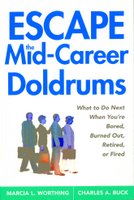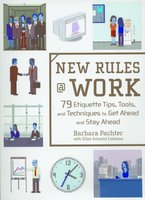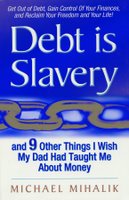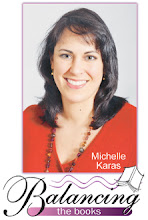If you’re dealing with difficult employees, this book makes some helpful suggestions
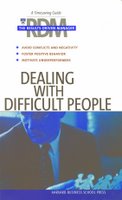 Reviewed: “Dealing with Difficult People,” from The Results-Driven Manager series, Harvard Business School Press, 2005, $14.95, 139 pages.
Reviewed: “Dealing with Difficult People,” from The Results-Driven Manager series, Harvard Business School Press, 2005, $14.95, 139 pages.Managing conflict at work is kind of like Kenny Rogers says in “The Gambler”: “You’ve got to know when to hold ’em. Know when to fold ’em. Know when to walk away, and know when to run.”
Learning what to do — as a manager — during disputes in the workplace is the topic of “Dealing with Difficult People,” a tidy little collection of articles from the “Harvard Management Update” and the “Harvard Management Communication Letter.”
Full of short and to-the-point articles and helpful suggestions, the slim book is a guide for senior to middle managers for dealing with difficult employees. It offers useful information for management types as well as anyone who needs to brush up on conflict resolution in the workplace.
As someone who avoids conflict like the plague, I particularly enjoyed the chapter called “Don’t Just Do Something — Sit There.”
“If a dispute doesn’t interfere with an employee’s performance, does not disrupt the work environment, and is not a violation of company policy, then ‘benign neglect’ is probably a suitable approach for a manager,” said David Lipsky, director of the Institute of Conflict Resolution at Cornell University.
Managers should look at such situations as “an opportunity for your staff members to develop their problem-solving skills.”However, the book notes, there are certain situations in which a manager should definitely intervene:
•When the disagreement is between an assertive employee and a timid, less vocal person.
•When an argument between two employees has broadened to encompass additional staff members.
•When the conflict involves illegal conduct, such as sexual harassment or civil rights violations.
However, the laissez-faire approach to management isn’t always the best tack, per the chapter “Don’t Avoid Conflicts — Manage Them”“Ducking conflict,” Monci J. Williams, author of the chapter, advises, “may actually make it harder for us to achieve our goals.”Managers, when they see a conflict brewing, “may notice that both parties repeatedly assert their own needs and wishes, and tell each other why the other guy is wrong. The experts call this the ‘attack/defend spiral,’ and it’s where most of us flame out.”
The solution, according to the Harvard experts, is to use “neutral ‘opening’ and ‘informing’ statements to encourage the other person to open up. Comments such as ‘I know we’ve both been very concerned about X, but I also know that Y is very important to you; I’d like to understand that better’ encourage the other person to talk about her concerns and wants.”
(But doesn’t that take for granted a civilized and polite workplace?)
Also noted is “When to Walk Away from a Fight,” in a chapter written by Rebecca M. Saunders.
During a work-related argument, “If the other person is fidgeting, leaning forward, or shaking a finger in your face, then back off politely,” Saunders writes. “If both parties insist they are right and refuse to back down, the cost can be high — angry words and hard feelings that never go away can make the workplace unpleasant for everyone.”
It’s important to “take a breath and decide if it’s worth escalating or not,” she said.
And, like “The Gambler” says, “Now every gambler knows that the secret to survivin’ is knowing what to throw away and knowing what to keep.”Remember to play your cards right when dealing with difficult folks at work.
I love a good poker metaphor.
Labels: Balancing the Books, book review, conflict resolution, Dealing with Difficult People, Harvard Business School Press, Michelle Karas, The Results Driven Manager
 RSS
RSS
